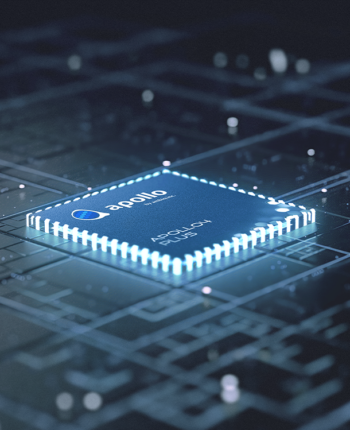The 5-Second Trick For Ambiq apollo3 blue
The 5-Second Trick For Ambiq apollo3 blue
Blog Article

Prompt: A Samoyed as well as a Golden Retriever Puppy are playfully romping by way of a futuristic neon metropolis at nighttime. The neon lights emitted through the nearby buildings glistens off in their fur.
Our models are educated using publicly offered datasets, Just about every obtaining unique licensing constraints and necessities. A lot of of those datasets are affordable and even free of charge to make use of for non-commercial uses for example development and analysis, but restrict professional use.
You can see it as a method to make calculations like regardless of whether a little house must be priced at ten thousand dollars, or what kind of weather conditions is awAIting in the forthcoming weekend.
That is what AI models do! These jobs eat hours and several hours of our time, but they are now automatic. They’re along with every little thing from information entry to routine shopper issues.
Concretely, a generative model In cases like this may very well be just one big neural network that outputs photographs and we refer to those as “samples in the model”.
Well-liked imitation strategies require a two-stage pipeline: first Discovering a reward function, then running RL on that reward. This type of pipeline could be slow, and because it’s indirect, it is tough to ensure which the resulting coverage functions very well.
Amongst our core aspirations at OpenAI should be to build algorithms and procedures that endow computer systems by having an understanding of our world.
That’s why we believe that Finding out from authentic-environment use is a crucial element of creating and releasing progressively Risk-free AI devices after some time.
more Prompt: Photorealistic closeup video of two pirate ships battling each other because they sail within a cup of espresso.
Precision Masters: Details is similar to a good scalpel for precision surgical procedure to an AI model. These algorithms can system tremendous information sets with terrific precision, locating patterns we might have missed.
AMP’s AI platform makes use of Laptop eyesight to acknowledge designs of distinct recyclable elements in the commonly advanced squander stream of folded, smashed, and tattered objects.
Apollo510 also increases its memory capability about the previous era with four MB of on-chip NVM and three.75 MB of on-chip SRAM and TCM, so developers have smooth development and a lot more software overall flexibility. For further-massive neural network models or graphics property, Apollo510 has a host of higher bandwidth off-chip interfaces, individually capable of peak throughputs up to 500MB/s and sustained throughput more than 300MB/s.
Prompt: A petri dish Ambiq which has a bamboo forest developing in just it that has little pink pandas working all-around.
The crab is brown and spiny, with long legs and antennae. The scene is captured from a broad angle, showing the vastness and depth with the ocean. The water is clear and blue, with rays of daylight filtering through. The shot is sharp and crisp, by using a significant dynamic vary. The octopus along with the crab are in concentration, though the history is slightly blurred, creating a depth of field impact.
Accelerating the Development of Optimized AI Features with Ambiq’s neuralSPOT
Ambiq’s neuralSPOT® is an open-source AI developer-focused SDK designed for our latest Apollo4 Plus system-on-chip (SoC) family. neuralSPOT provides an on-ramp to the rapid development of AI features for our customers’ AI applications and products. Included with neuralSPOT are Ambiq-optimized libraries, tools, and examples to help jumpstart AI-focused applications.
UNDERSTANDING NEURALSPOT VIA THE BASIC TENSORFLOW EXAMPLE
Often, the best way to ramp up on a new software library is through a comprehensive example – this is why neuralSPOt includes basic_tf_stub, an illustrative example that leverages many of neuralSPOT’s features.
In this article, we walk through the example block-by-block, using it as a guide to building AI features using neuralSPOT.
Ambiq's Vice President of Artificial Intelligence, Carlos Morales, went on CNBC Street Signs Asia to discuss the power consumption of AI and trends in endpoint devices.
Since 2010, Ambiq has been a leader in ultra-low power semiconductors that enable endpoint devices with more data-driven and AI-capable features while dropping the energy requirements up to 10X lower. They do this with the patented Subthreshold Power Optimized Technology (SPOT ®) platform.
Computer inferencing is complex, and for endpoint AI to become practical, these devices have to drop from megawatts of power to microwatts. This is where Ambiq has the power to change industries such as healthcare, agriculture, and Industrial IoT.
Ambiq Designs Low-Power for Next Gen Endpoint Devices
Ambiq’s VP of Architecture and Product Planning, Dan Cermak, joins the ipXchange team at CES to discuss how manufacturers can improve their products with ultra-low power. As technology becomes more sophisticated, energy consumption continues to grow. Here Dan outlines how Ambiq stays ahead of the curve by planning for energy requirements 5 years in advance.
Ambiq’s VP of Architecture and Product Planning at Embedded World 2024
Ambiq specializes in ultra-low-power SoC's designed to make intelligent battery-powered endpoint solutions a reality. These days, just about every endpoint device incorporates AI features, including anomaly detection, speech-driven user interfaces, audio event detection and classification, and health monitoring.
Ambiq's ultra low power, high-performance platforms are ideal for implementing this class of AI features, and we at Ambiq are dedicated to making implementation as easy as possible by offering open-source developer-centric toolkits, software libraries, and reference models to accelerate AI feature development.
NEURALSPOT - BECAUSE AI IS HARD ENOUGH
neuralSPOT is an AI developer-focused SDK in the true sense of the word: it includes everything you need to get your AI model onto Ambiq’s platform. You’ll find libraries for talking to sensors, managing SoC peripherals, and controlling power and memory configurations, along with tools for easily debugging your model from your laptop or PC, and examples that tie it all together.
Facebook | Linkedin | Twitter | YouTube